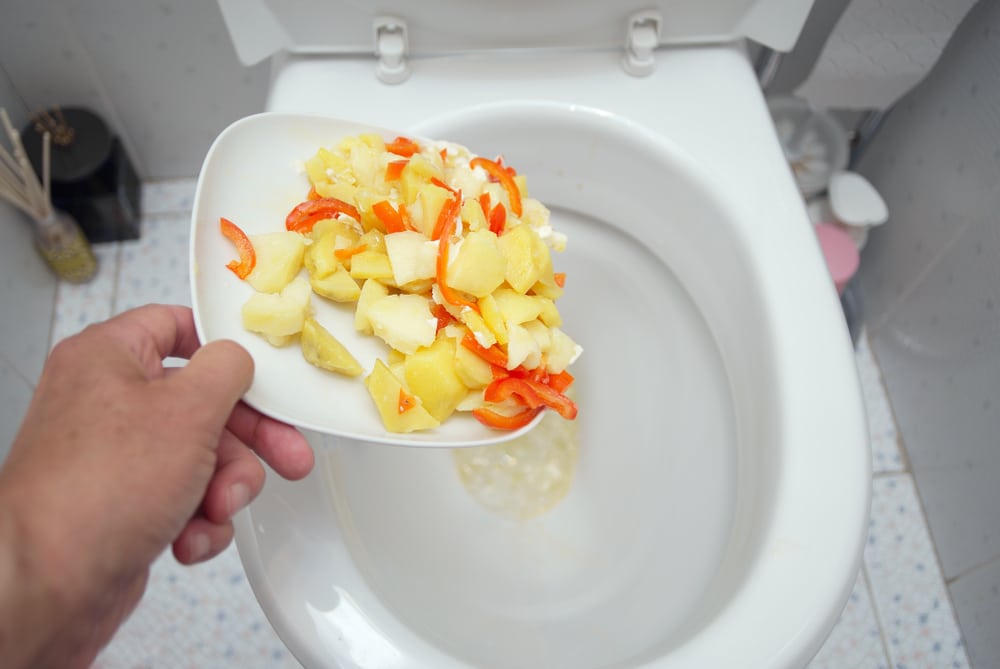Can You to Flush Food in the Toilet?
Can You to Flush Food in the Toilet?
Blog Article
We've unearthed this article relating to What Can Happen If You Flush Food Down the Toilet? listed below on the web and concluded it made perfect sense to discuss it with you over here.

Intro
Many individuals are commonly confronted with the issue of what to do with food waste, particularly when it pertains to leftovers or scraps. One typical concern that develops is whether it's okay to purge food down the bathroom. In this short article, we'll look into the reasons why people may consider flushing food, the effects of doing so, and alternative techniques for proper disposal.
Reasons individuals may think about purging food
Lack of awareness
Some people might not be aware of the possible harm brought on by purging food down the toilet. They may wrongly believe that it's a safe method.
Convenience
Flushing food down the bathroom may appear like a quick and very easy solution to throwing away undesirable scraps, particularly when there's no nearby garbage can offered.
Laziness
In many cases, people may just pick to flush food out of sheer negligence, without thinking about the consequences of their activities.
Effects of flushing food down the commode
Ecological effect
Food waste that ends up in waterways can add to air pollution and injury marine ecosystems. Additionally, the water used to purge food can stress water resources.
Pipes problems
Flushing food can bring about clogged pipelines and drains, creating expensive pipes repairs and troubles.
Kinds of food that must not be flushed
Fibrous foods
Foods with coarse textures such as celery or corn husks can obtain tangled in pipes and create clogs.
Starchy foods
Starchy foods like pasta and rice can soak up water and swell, leading to obstructions in pipelines.
Oils and fats
Greasy foods like bacon or cooking oils must never be flushed down the toilet as they can solidify and create clogs.
Proper disposal techniques for food waste
Making use of a waste disposal unit
For homes geared up with waste disposal unit, food scraps can be ground up and purged with the pipes system. Nonetheless, not all foods are suitable for disposal in this fashion.
Recycling
Certain food packaging products can be recycled, minimizing waste and minimizing ecological effect.
Composting
Composting is an eco-friendly method to deal with food waste. Organic materials can be composted and made use of to enrich soil for horticulture.
The value of proper waste monitoring
Minimizing ecological harm
Appropriate waste monitoring practices, such as composting and recycling, assistance decrease pollution and protect natural deposits for future generations.
Protecting pipes systems
By avoiding the practice of flushing food down the commode, house owners can protect against costly plumbing repairs and maintain the honesty of their plumbing systems.
Final thought
In conclusion, while it may be tempting to purge food down the toilet for benefit, it is essential to understand the prospective effects of this activity. By taking on appropriate waste management techniques and disposing of food waste properly, individuals can contribute to much healthier pipes systems and a cleaner atmosphere for all.
FLUSH FOOD DOWN THE TOILET?
FLUSHING FOOD CAN CAUSE BLOCKED DRAINS IN YOUR HOME
All of the plumbing fixtures in your home are connected to the same sewer pipe outside of your home. This outdoor sewer pipe is responsible for transporting all the wastewater from your home to the Council sewer mains. Even small pieces of food that go down the kitchen sink can cause problems for your sewer. It should therefore be obvious that flushing larger bits of food, such as meat, risks a clog in either the toilet itself or the sewer pipes. Flushing greasy food is even more problematic because oil coagulates when it cools, coating the interior lining of your pipes.
THE TOILET IS NOT A BIN
Food isn’t the only thing that people shouldn’t be flushing down the toilet. People use the toilet to dispose of all kinds of things such as tampons, makeup wipes, dental floss, kitty litter and even underwear. Water goes to great lengths to educate residents about the high costs and stress placed on wastewater treatment systems simply from people flushing the wrong stuff down the toilet. It costs taxpayers millions of dollars each year, and homeowners thousands in blocked drain repairs.
FLUSHING FOOD IS A WASTE OF WATER
Flushing food is a waste of our most precious resource - water. In June this year Level 1 water restrictions were introduced to protect water supply from drought conditions. Much of New South Wales continues to be affected by prolonged drought with recent figures revealing up to 97 per cent of the state remains in drought. Depending on whether you have a single or dual flush toilet, every single flush uses between five and 11 litres of water. In the current climate this is a huge amount of water to be wasting on flushing food that should be placed in the bin (or better yet, the compost).
https://www.jabplumbingsolutions.com.au/blog/can-you-flush-food-down-the-toilet

As a passionate person who reads about What Can Happen If You Flush Food Down the Toilet?, I imagined sharing that excerpt was really helpful. For those who appreciated our blog posting please make sure you remember to share it. I praise you for being here. Come back soon.
View Report this page